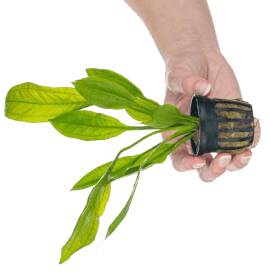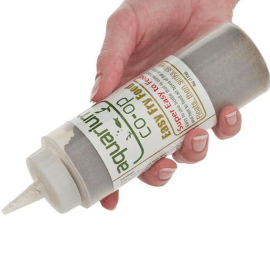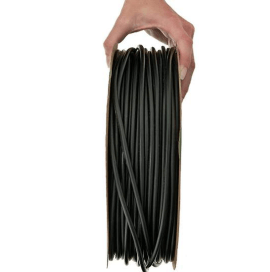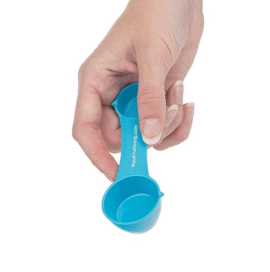5 Easy Tips to Save Time in the Fishkeeping Hobby
We all love the thought of relaxing in front of our aquariums, staring at our beautiful fish peacefully swimming back and forth amidst an underwater forest of aquatic plants. However, keeping a fish tank looking clean and pristine takes a lot of time, which can end up decreasing our enjoyment of the hobby. Learn about our top 5 time-saving hacks to simplify your aquarium care and maintenance.
1. Use an Automatic Timer
Electrical outlet timers are often used for things like Christmas lights, indoor lamps, and other household devices. However, did you know you can also use them to automate your aquarium lights and CO2 (carbon dioxide) injection? Instead of manually turning on and off the fish tank light, use a timer to set the same amount of light each day, allowing you to balance a planted aquarium and grow less algae. Gone are the days when you accidentally keep the light on 24/7 and end up with a tank full of green water.
While there are many types of timers, such as mechanical or digital ones, we personally prefer Wi-Fi timers that can be remotely controlled by a smartphone even when we’re out of town. They take less than 15 minutes to install and then can be used for years and years. Best of all, in the case of a power outage, they automatically sync with the internet as soon as the power returns, thus keeping the correct time without losing your lighting schedule.

The Kasa Wi-Fi timer can be turned on and off using the button on the side or through an app on your phone.
2. Speed up Water Changes
Our founder Cory used to run an aquarium maintenance business, and since time is money, he sought find the fastest way to do water changes with minimal hassle. Typically, he gravel vacuums or cleans the substrate every 4–6 weeks. However, if you just need to change some water in between, try this technique:
- Attach a power head or water pump to a tight-fitting hose (with a hose clamp if needed).
- Stick the power head into the aquarium.
- Put the other end of the hose into the sink, in a large trash can with wheels, or out the window to water your outdoor plants.
- Plug in the powerhead to begin pumping out dirty tank water.
- While the powerhead is running, spend that time scraping algae off the side of the tank and let the pump suck up the gunk.
- Once the desired amount of water has been removed, unplug the pump.
Now you can stick the power head into a clean trash can or basin full of dechlorinated water while the hose end goes into the aquarium. Then plug in the power head to transport clean water into the fish tank.

Use a pump head to pump dirty water out of and clean water into an aquarium for fast water changes.
3. Prewash New Substrate
Sometimes we need to wash dirty substrate before putting it into the aquarium or else the super-fine particles in the gravel will cause the water to become very cloudy. While this substrate “dust” is usually safe for fish, it is unattractive to us because we want to be able to see our fish. The typical way to clean substrate is to dump it into a bucket and rinse it with a garden hose, but it’s hard to thoroughly mix the substrate. Pockets of debris don’t get washed out and wind up still causing murky water.
Instead, we recommend getting a big, coarse fish net, putting a few scoops of substrate into the net, and then massaging it under running water from a sink or hose. Once the substrate is fully cleaned, dump it into a bucket and repeat with the next scoopful. We commonly use this technique if we need to increase the KH in our tank water by adding crushed coral to the filter or substrate. Crushed coral is notoriously dusty, and this method of washing out all the dust through a fish net is much faster than the bucket method.

Use a big, coarse fish net with larger holes to rinse out dirty aquarium substrate.
4. Embrace a Clean-Up Crew
Many hobbyists hate snails, but really, they are an aquarist’s best friend. Clean-up crew members like snails, shrimp, plecos, and even goldfish are amazing for keeping your aquarium clean because they are constantly searching every nook and cranny for things they can consume. By eating leftover fish food, decaying leaves, and algae, they break down organic matter into smaller pieces that plants can use, which means you can spend less time scraping the walls and cleaning the aquarium.
We’re not saying you never have to do tank maintenance, but it’s like having a team of 20 little Roombas or robotic vacuums roaming around the entire aquarium. All you have to do is to occasionally “take out the trash” — also known as cleaning the filter and gravel vacuuming every month or so. The nice thing is that many clean-up crew members will easily reproduce, which means you can buy them once and spread them to all your tanks.

The Borneo sucker loach is excellent at scraping off algae from hardscape, plant leaves, and walls.
5. Do Fewer Water Changes
A common piece of advice that beginners often hear is “You should do a water change on your fish tank once a week.” But veteran fishkeepers know that there are actually several ways to reduce the number of water changes you have to do. With a cycled or seasoned aquarium, the rule of thumb we follow is to test the tank water and do a water change when nitrates get above 50 ppm. (For more details, see this water change flow chart.) Nitrate is a byproduct of your fish’s waste, rotting leaves, excess fish food, and other organics breaking down in your tank. To slow down the waste production in our tanks, consider these tips:
- Downsize the number of fish you own. The less fish you have to feed, the less poop they produce. If there’s a fish that you’ve fallen out of love with, give it back to the fish store to sell to someone who will love it.
- The same principle applies to tanks. If you have “multiple tank syndrome” where you have so many aquariums that it takes forever to care for them, tear down the fish tanks that no longer bring you joy and just focus on a smaller number of aquariums that you can invest more time in.
- Add live aquarium plants. Not only are they gorgeous, natural decorations for your fish tank, but they help purify the water by consuming nitrogen waste products like ammonia, nitrite, and nitrate. In many of our aquariums, the presence of plants has significantly decreased the amount of nitrate in the water so that weekly water changes are no longer necessary.
- Use filtration that’s easy to maintenance. For example, Cory has two canister filters running on his 800-gallon monster tank. Because canister filters are more difficult to clean, he ends up waiting 6–12 months in between cleanings because he dreads the task so much. When he uses simple sponge filters that are much easier to clean, he finds himself spending a little time each month upkeeping them, which saves a lot of effort in the long run. This is like the difference between washing a few dirty dishes every day versus waiting until all of the dishes you own are dirtied so that it takes forever to wash them all.

A densely planted tank stocked with fewer fish can greatly reduce the number of water changes you need to do.
If your aquariums require 50% water changes every week like clockwork and cannot stand any variance to this schedule, then you’ll really be in trouble if you have to go out of town or get sick. Scale back and simplify your fishkeeping hobby so that you can spend more time enjoying these little slices of nature at home. For more tips and tricks, read this article on how to save money with aquariums, even if you have a smaller budget.




